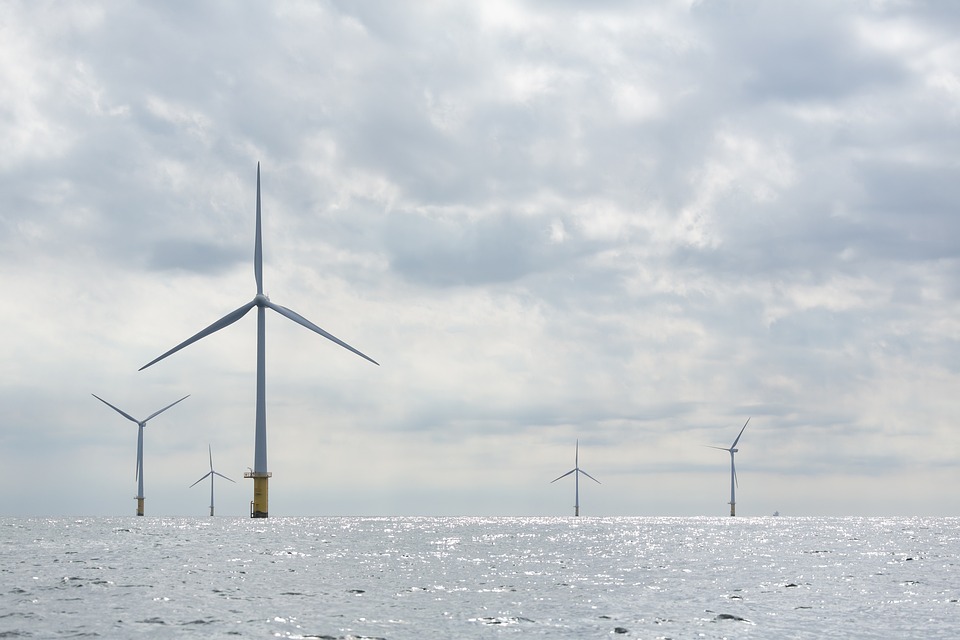Clean Energy: The Key to Tackling Climate Change and Air Pollution
The Urgency of Transitioning to Clean Energy
The world is facing a dual crisis of climate change and air pollution, with growing urgency to shift towards clean energy sources. According to the Intergovernmental Panel on Climate Change (IPCC), the planet has already warmed by 1°C due to human activities, and we are seeing the devastating impacts with extreme weather events, rising sea levels, and loss of biodiversity. At the same time, air pollution from burning fossil fuels is causing millions of premature deaths each year, with the World Health Organization (WHO) estimating that 91% of the world’s population lives in places where air quality exceeds guidelines.
The Impact of Fossil Fuels on Climate Change and Air Pollution
Fossil fuels, such as coal, oil, and natural gas, have been the primary sources of energy for decades, but their combustion releases greenhouse gases and air pollutants into the atmosphere. Carbon dioxide (CO₂), methane (CH₄), and nitrous oxide (N₂O) trap heat in the atmosphere, leading to global warming and climate change. Additionally, burning fossil fuels emits particulate matter, sulfur dioxide, and nitrogen oxides, which contribute to air pollution and respiratory diseases.
The Advantages of Clean Energy Sources
Clean energy, also known as renewable energy, includes resources that are naturally replenished, such as sunlight, wind, rain, tides, and geothermal heat. Unlike fossil fuels, clean energy sources produce little to no greenhouse gas emissions and air pollutants during electricity generation, making them a vital solution for addressing climate change and air pollution. The advantages of clean energy sources are manifold:
- Reduced greenhouse gas emissions
- Improved air quality and public health
- Enhanced energy security and independence
- Creation of green jobs and economic growth
- Lower long-term energy costs
The Role of Solar and Wind Power
Solar and wind power, in particular, have experienced dramatic growth in recent years, thanks to technological advancements and government incentives. Solar photovoltaic (PV) panels convert sunlight directly into electricity, while wind turbines harness the kinetic energy of the wind to generate power. Both solar and wind power offer significant environmental benefits and have become increasingly cost-competitive with traditional energy sources. For example, in 2020, the International Energy Agency (IEA) reported that solar is now the cheapest source of electricity in history for over two-thirds of the world’s population.
Case Studies of Successful Clean Energy Transitions
Several countries have made remarkable strides in transitioning to clean energy, demonstrating that a low-carbon future is not only desirable but also achievable. For instance, Denmark has invested heavily in wind energy and now generates more than 40% of its electricity from wind power. Similarly, Costa Rica has set ambitious goals to become carbon neutral and has relied on renewable sources for over 98% of its electricity for several consecutive years.
Barriers to Clean Energy Adoption
Despite the clear benefits of clean energy, several barriers exist that hinder its widespread adoption. These include:
- Initial high costs of installation and infrastructure
- Intermittency and variability of solar and wind power
- Resistance from vested interests in the fossil fuel industry
- Lack of supportive policies and regulatory frameworks
The Way Forward: Accelerating the Clean Energy Transition
To overcome these barriers and accelerate the transition to clean energy, concerted efforts are needed from governments, businesses, and individuals. This entails:
- Investing in research and development of renewable energy technologies
- Implementing policies to incentivize clean energy deployment
- Transitioning from fossil fuel subsidies to renewable energy subsidies
- Enhancing energy efficiency and storage solutions
- Increasing public awareness and education on the benefits of clean energy
Conclusion
Clean energy is undeniably the key to tackling climate change and air pollution. By transitioning to renewable sources such as solar and wind power, we can significantly reduce greenhouse gas emissions, improve air quality, and build a more sustainable and resilient future for generations to come. The time to act is now, and it requires collective commitment and action towards a cleaner, greener, and healthier planet.


Pingback: Clean Energy: The Key to Tackling Climate Change and Air Pollution – Home Solar Sessions
Your point of view caught my eye and was very interesting. Thanks. I have a question for you.
перепродажа аккаунтов магазин аккаунтов социальных сетей
перепродажа аккаунтов купить аккаунт
продажа аккаунтов соцсетей аккаунт для рекламы
безопасная сделка аккаунтов https://ploshadka-prodazha-akkauntov.ru
платформа для покупки аккаунтов маркетплейс аккаунтов
услуги по продаже аккаунтов услуги по продаже аккаунтов
продать аккаунт платформа для покупки аккаунтов
Account Buying Platform Account Market
Ready-Made Accounts for Sale Account Selling Service
Account Exchange Service Find Accounts for Sale
Accounts market buyaccountsmarketplace.com
Online Account Store Guaranteed Accounts
Account Trading Platform Database of Accounts for Sale
Account market Website for Buying Accounts
Buy and Sell Accounts Purchase Ready-Made Accounts
Social media account marketplace Buy accounts
Sell Pre-made Account Accounts for Sale
Account market Accounts for Sale
find accounts for sale account market
account trading platform account trading service
account selling platform gaming account marketplace
account trading service secure account purchasing platform
account store website for selling accounts
account store account buying platform
account marketplace social media account marketplace
account market discountaccountsmarket.com
website for buying accounts account exchange
buy account account market
buy accounts account trading platform
accounts for sale gaming account marketplace
buy pre-made account account exchange service
secure account sales account buying service
secure account purchasing platform account selling service
account trading platform accounts for sale
find accounts for sale secure account sales
database of accounts for sale gaming account marketplace
account selling service buy and sell accounts
buy and sell accounts account trading
social media account marketplace marketplace for ready-made accounts
accounts marketplace secure account purchasing platform
profitable account sales website for selling accounts
accounts for sale buy and sell accounts
account exchange service purchase ready-made accounts
account exchange online account store
account buying service accounts-offer.org
website for buying accounts account market
account selling service https://buy-best-accounts.org
secure account sales accounts market
buy and sell accounts https://accounts-marketplace.live
sell account social-accounts-marketplace.xyz
purchase ready-made accounts https://buy-accounts.space
secure account sales https://buy-accounts-shop.pro
ready-made accounts for sale https://accounts-marketplace.art
account selling service https://social-accounts-marketplace.live/
buy account account market
accounts marketplace https://accounts-marketplace.online/
buy and sell accounts https://accounts-marketplace-best.pro/
биржа аккаунтов https://akkaunty-na-prodazhu.pro
биржа аккаунтов kupit-akkaunt.xyz
продать аккаунт магазины аккаунтов
магазин аккаунтов akkaunt-magazin.online
маркетплейс аккаунтов https://akkaunty-market.live
маркетплейс аккаунтов https://kupit-akkaunty-market.xyz
маркетплейс аккаунтов соцсетей https://akkaunty-optom.live/
площадка для продажи аккаунтов https://online-akkaunty-magazin.xyz/
маркетплейс аккаунтов akkaunty-dlya-prodazhi.pro
биржа аккаунтов kupit-akkaunt.online
facebook ad account for sale https://buy-adsaccounts.work/
facebook ad accounts for sale https://buy-ad-account.top
buy aged fb account https://buy-ad-accounts.click
facebook account sale buying fb accounts
facebook ad account buy buy facebook account
buy aged fb account https://buy-ads-account.work
buy facebook ad accounts https://ad-account-for-sale.top
buy aged fb account https://buy-ad-account.click
cheap facebook accounts buy account facebook ads
buy google adwords accounts buy google ads invoice account
google ads reseller https://buy-ads-accounts.click
facebook account buy https://buy-accounts.click
adwords account for sale https://ads-account-for-sale.top
buy google ads https://ads-account-buy.work/
buy google ads threshold accounts https://buy-ads-invoice-account.top/
buy google ads verified account https://buy-account-ads.work
buy google ads buy google ads threshold account
buy aged google ads account https://sell-ads-account.click
buy google ads verified account https://buy-verified-ads-account.work
buy facebook business managers https://buy-business-manager.org
buy google adwords accounts https://ads-agency-account-buy.click
verified business manager for sale https://buy-business-manager-acc.org
buy verified bm https://buy-bm-account.org
buy fb bm https://buy-verified-business-manager-account.org/
buy facebook business manager accounts buy business manager
business manager for sale buy-business-manager-verified.org
buy business manager account https://business-manager-for-sale.org/
verified bm https://buy-bm.org
verified business manager for sale https://buy-business-manager-accounts.org
tiktok ads account buy https://buy-tiktok-ads-account.org
tiktok ads account for sale https://tiktok-ads-account-buy.org
tiktok ads account buy https://tiktok-ads-account-for-sale.org
buy tiktok business account https://buy-tiktok-ad-account.org
tiktok ads account for sale https://tiktok-agency-account-for-sale.org
buy tiktok ads account https://buy-tiktok-ads-accounts.org
tiktok agency account for sale https://buy-tiktok-business-account.org
tiktok ad accounts https://buy-tiktok-ads.org
buy tiktok ads https://tiktok-ads-agency-account.org
Explore the ranked best online casinos of 2025. Compare bonuses, game selections, and trustworthiness of top platforms for secure and rewarding gameplaycasino activities.
facebook ad account for sale ready-made accounts for sale sell accounts
buy facebook ads account account trading platform account exchange
I don’t think the title of your article matches the content lol. Just kidding, mainly because I had some doubts after reading the article.